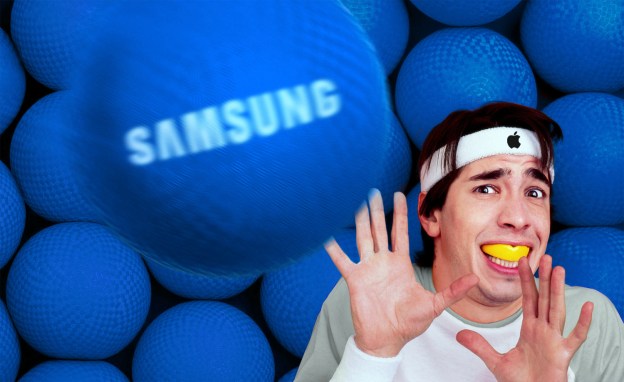
While I was watching the coverage of Margret Thatcher’s passing, something the former Prime Minister once said stuck with me. “Being powerful is like being a lady. If you have to tell people you are, you aren’t.”
I think the same thing applies to cool. If you have to tell someone you’re cool, or your product is cool, you aren’t, and it isn’t. Right now, Apple has to tell people it and its products are cool.
What happened? Samsung did to Apple what Apple did to Microsoft, skewering its devoted users and reputation, only better. The irony here is that Apple recently accused Samsung of copying its phone and tablet, but it missed the real threat. What Apple should have been concerned with is that Samsung copied its strategy against Microsoft, improved on it, funded it better and turned it against its creator.
There is a way for Apple to fight back, but the company no longer has that skill, and apparently doesn’t know where to get it, either. Let me explain.
Losing your cool
You see this same effect with celebrities who are really cool for a while, then they have a movie flop, fall out of favor, do some really stupid things, and suddenly they aren’t cool anymore. Charlie Sheen, Lindsay Lohan, Paris Hilton, Britney Spears, Donald Trump (was he ever really cool?) and so on. Each had their time in the sun, and either faded from being cool or pulled a publicity face plant.
…just because you lose the image of being cool doesn’t mean you can’t get it back.
So just because you lose the image of being cool doesn’t mean you can’t get it back. But what if someone is going out of their way to make you look uncool, which is what Samsung is doing very well to Apple. What do you do?
Well, firing back is an option. Politicians do this to each other all the time. But generally they just make each other look like dicks, so fighting fire with fire doesn’t work. If Samsung execs really cared about being cool, they would probably try to improve their horrid customer support. They’re OK with trendy and cheap. Exclusive, which is the part of “cool” Apple strives for, isn’t part of Samsung’s image, so Apple couldn’t try to target Samsung the same way.
Apple’s mistake
Apple’s mistake was running the old “I’m a Mac, I’m a PC” campaign against Microsoft. This is like coming up with a nuclear bomb, but not really having a clue what to do when someone else produces their own.

Now, Apple did some damage to Microsoft with its campaign, but by the time Vista shipped, Microsoft really wasn’t that cool anymore anyway, so Apple’s damage was pretty trivial. The ads both showed how effective attack ads could be, and that companies like Microsoft didn’t really have enough cool to knock down. But someone over at Samsung saw the potential in Apple’s nuclear bomb, and knew it could be even more powerful if used against Apple. Apple essentially invented a weapon that it was particularly vulnerable to, and it’s coming back to bite it in the ass now.
Recovering cool
If you want to seem cool in school, you hang out with the cool kids. The same goes with a product. If folks see people they think are cool, acting cool with Apple products, they will connect the folks to status, and Apple will start to recover its aura. That generally would mean taking on people who are cool, making sure they use Apple phones and tablets (many already do), and ensuring that use was very visible, so that we could connect the device to the folks using it. Apple already tried with those celebrity Siri commercials, but someone missed the meeting where they heard they needed to make sure the celebrities look cool using the technology; in most cases the ads make them look like they are mentally challenged. Apple’s ads often make their users look really stupid. This suggests that Apple not only doesn’t understand Samsung’s attack (despite pioneering the same approach), it never thought through how to defend against it.
But Apple not only has to defend against Samsung’s efforts to make its brand look uncool, it has to stop doing stupid things that result in the same thing. Moves like selling iPhones in Walmart have to stop, because no one is going to connect a Walmart product to cool no matter what the ads and PR say. If this type of thing continues, it could actually damage Apple’s reputation far more than Samsung could.
I have no doubt Apple could be cool again, but I doubt the company knows what to do to make this happen. That’s probably the most important difference between Jobs and Cook: Jobs would know what to do, and I don’t think Cook even sees the problem.
Editors' Recommendations
- This one Apple Fitness feature completely changed how I exercise
- AirTags range: here’s how far the tracker can reach
- Nomad’s new iPhone case and Apple Watch band may be its coolest yet
- How to find your lost phone (tips for iPhone and Android)
- Apple’s Vision Pro headset can now be used to shop at Best Buy


